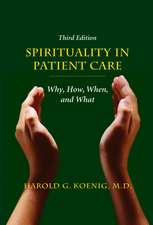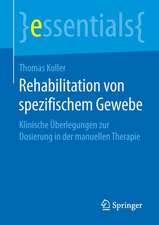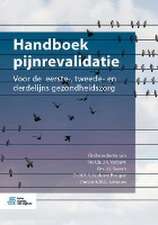Making the Patient Your Partner: Communication Skills for Doctors and Other Caregivers
Autor W. Sterling Edwardsen Limba Engleză Hardback – 22 mai 1995 – vârsta până la 17 ani
| Toate formatele și edițiile | Preț | Express |
|---|---|---|
| Paperback (1) | 224.76 lei 6-8 săpt. | |
| Bloomsbury Publishing – 29 iul 1997 | 224.76 lei 6-8 săpt. | |
| Hardback (1) | 463.72 lei 6-8 săpt. | |
| Bloomsbury Publishing – 22 mai 1995 | 463.72 lei 6-8 săpt. |
Preț: 463.72 lei
Preț vechi: 610.13 lei
-24% Nou
Puncte Express: 696
Preț estimativ în valută:
88.73€ • 92.89$ • 73.42£
88.73€ • 92.89$ • 73.42£
Carte tipărită la comandă
Livrare economică 05-19 aprilie
Preluare comenzi: 021 569.72.76
Specificații
ISBN-13: 9780865692558
ISBN-10: 0865692556
Pagini: 240
Dimensiuni: 156 x 235 x 24 mm
Greutate: 0.61 kg
Editura: Bloomsbury Publishing
Colecția Praeger
Locul publicării:New York, United States
ISBN-10: 0865692556
Pagini: 240
Dimensiuni: 156 x 235 x 24 mm
Greutate: 0.61 kg
Editura: Bloomsbury Publishing
Colecția Praeger
Locul publicării:New York, United States
Notă biografică
Thomas Gordon, PhD, is president of Effectiveness Training, Inc., Solana Beach, California. He is the creator of the pioneering program, Parent Effectiveness Training (P.E.T.), now taught in 37 countries. His training program for managers is used by the most successful companies in the United States.W. Sterling Edwards, MD, is professor and chairman emeritus of the Department of Surgery at the University of New Mexico School of Medicine. He is the author of numerous books and publications in the medical field.
Cuprins
Dissatisfaction with Relationships with PatientsA Collaborative Model for Relating to PatientsEmpathic Listening: Applications and BenefitsRoadblocks to Patient CommunicationSelf-Disclosure Skills for Health Care ProfessionalsDealing Effectively with ConflictsHelping Patients Cope with an Adverse DiagnosisSpecial Problems Dealing with Aids PatientsHelping Patients Maintain HopeHelping Patients Find MeaningHelping the Terminal PatientOther Applications of Interpersonal Skills
Recenzii
Strongly recommended for physicians and especially for office, clinic, and hospital staff caregivers. Patient advocates (ombudsmen) should find the style and content appealing.
Health professionals need to learn the communication skills that will create collaborative and mutually satisfying relationships with patients. Using cases, interviews, dialougues, and vignettes, the authors provide effective models or blueprints for health professionals to follow. The skills are generic and improve interpersonal communication throughout the spectrum of medical specializations and services.
[T]he authors suggest ways in which health care providers can improve skills in such areas as active listening, identifying and overcoming barriers to communication, dealing with conflicts with patients, and helping persons with terminal illnesses. The book is well organized and can be read quickly, and a busy professional can take away new ideas or expand on existing skills after a relatively small time investment. The book also includes a concise list of some of the best resources available for health care workers who want more training in communication skills. . . . [T]he book is an easy-to-read summary of an approach to communicating with patients. It can reinvigorate physicians who already believe that the physician-patient relationship is a powerful tool, and it can inspire those who seek more collaboration with patients.
This is a useful book that will help healthcare practitioners at all levels sharpen their communication skills and, in doing so, encourage a trusting, collaborative relationship with the patient. The authors remind us that our primary goal in healthcare is to care for and comfort our patients.
[I] approached this text wondering whether it would improve on or add to what is already available. When I had finished it, I wanted to read more of the authors' works and was eager to try some of the specific techinques described. . . . [T]he book is an easy-to-read summary of an approach to communicating with patients. It can reinvigorate physicians who already believe that the physician-patient relationship is a powerful tool, and it can inspire those who seek more collaboration with patients.
Health professionals need to learn the communication skills that will create collaborative and mutually satisfying relationships with patients. Using cases, interviews, dialougues, and vignettes, the authors provide effective models or blueprints for health professionals to follow. The skills are generic and improve interpersonal communication throughout the spectrum of medical specializations and services.
[T]he authors suggest ways in which health care providers can improve skills in such areas as active listening, identifying and overcoming barriers to communication, dealing with conflicts with patients, and helping persons with terminal illnesses. The book is well organized and can be read quickly, and a busy professional can take away new ideas or expand on existing skills after a relatively small time investment. The book also includes a concise list of some of the best resources available for health care workers who want more training in communication skills. . . . [T]he book is an easy-to-read summary of an approach to communicating with patients. It can reinvigorate physicians who already believe that the physician-patient relationship is a powerful tool, and it can inspire those who seek more collaboration with patients.
This is a useful book that will help healthcare practitioners at all levels sharpen their communication skills and, in doing so, encourage a trusting, collaborative relationship with the patient. The authors remind us that our primary goal in healthcare is to care for and comfort our patients.
[I] approached this text wondering whether it would improve on or add to what is already available. When I had finished it, I wanted to read more of the authors' works and was eager to try some of the specific techinques described. . . . [T]he book is an easy-to-read summary of an approach to communicating with patients. It can reinvigorate physicians who already believe that the physician-patient relationship is a powerful tool, and it can inspire those who seek more collaboration with patients.













